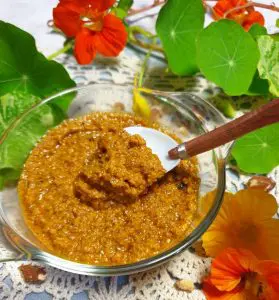Introducing Jane Wilks – Guest Article Writer
Self sufficiency is made up of many disciplines and almost every day I see another great example of clever and inventive ways how people can make better use of the natural resources around them.
That's what makes self sufficiency special and there's no better example of responsible use of natural resources employing the self sufficiency principals then the following article written by Jane – an Author from New Zealand and an expert in aromatic oils, Jane gives us a look at self sufficiency through the use of eco-friendly essential and fragrant oils.

Home Perfumery – by Jane Wilks
What exactly is perfume? Why do we use it? We certainly know that it has the wonderful ability to ‘seduce’ the senses by evoking memories, capturing the intangible and leaving a lasting impression. It also inspires us and fills us with longing for someone or a time long gone.
Throughout history, with its allure and mystique, perfume has transported us in to the magical realm, of the poetic and the erotic.
Up until the nineteenth century, perfumes were made entirely of natural aromatic oils.
With industrialization and over the course of time, commercial perfumes became largely synthetic.
Interestingly, recent global trends indicate that, in order to secure future sales growth, the perfume industry needs to look at manufacturing perfumes that offer aromatherapy or health-enhancing benefits.
Compared to the retail price of a popular ’brand’ perfume which is not even unique, you can, for a lot less money and a few inexpensive ingredients, make your own customized perfumes and colognes at home.
As well as knowing what goes into it, you don’t have to worry about added chemicals and preservatives going onto your skin. You also have fun making it.
The added benefit of choosing to use pure essential oils, is you can create scents that not only enhance the health of your skin but also your sense of well being. In this way, they work to address the mind, body and spirit.
 Our bodies are said to more easily recognize natural aromas because they smell of nature. These scents make us feel at home and are quite different from a lot of harsh,' fake' perfumes on the commercial market.
Our bodies are said to more easily recognize natural aromas because they smell of nature. These scents make us feel at home and are quite different from a lot of harsh,' fake' perfumes on the commercial market.
It is said too that a preference for natural perfumes is returning because natural scent smell different on each individual whereas synthetic-based perfumes smell the same on everyone.
Note: In case of allergies or very sensitive skin, it always pays to do a sample test on your skin first.
As a general rule, essential or fragrant oils (except for Lavender and Tea Tree oil), should not be applied undiluted on the skin. In the case of fragrant oils, you can wear a few drops on your skin preferably when they have been blended in a carrier or base vegetable oil first.
Pure essential oils are extremely potent and should be used carefully. However, a few pure essential oils are ideal as perfumes either on their own or combined with others.
Ylang Ylang , for example, is renowned as a well-balanced fragrance in its own right and essential oils such as Jasmine, Rose and Neroli which are all popular scents. Such oils can be dabbed on the wrist or behind the ears, either neat or diluted to 5 per cent (e.g.5 drops to 1 tsp oil) in Jojoba, Coconut or Sweet Almond oil.
All commercial perfumes fall into six distinct family types – these are:
Floral, Oriental, Fruit, Green, Amber/Wood and Oceanic/Ozone. Often they're simply concocted from bits and pieces from each family to become more enticingly individual.
When composing a perfume, there should be a balance between the top, middle and base notes. The top notes are the most volatile ingredients and tend to evaporate quickly. They have a light fresh quality that is immediately apparent. Typical top notes include the citrus oils such as Lime, Lemon and Bergamot.
The middle notes constitute the heart of the fragrance and usually form the bulk of the blend. Typical middle notes are floral oils such as Lavender, Rose or Geranium.
The base note gives the fragrance depth and act as fixatives for the more volatile components. For instance a typical base note would be Patchouli.
Note: Base notes are often thick and syrupy such as Vetiver and their scent takes a while to evolve fully.
PERFUME NOTES
|
Base |
Middle |
Top |
|
Cedarwood Atlas |
Chamomile |
Lemon |
|
Frankincense |
Clary sage |
Sweet Orange |
|
Jasmine |
Cypress |
Bergamot |
| Neroli | Geranium | N/A |
| Patchouli | Lavender | N/A |
| Pine Sylvestris | Marjoram | N/A |
| Ylang Ylang | Rosemary | N/A |
| N/A | Rose French | N/A |
Note: Some oils can also act as ' a bridging' oil in that that they can link middle to base, or top to middle.
Be guided by your instincts and choose the oils you feel attracted to. You may like to bear in mind the following characteristics of some of the romantic oils. For example Rose is closely associated with the heart and love. Jasmine helps enhance freedom of expression and Neroli is associated with purity. Sandalwood is meditative and Patchouli is known to have a grounding effect.
The basic perfume formula is 15% to 30% essential oil, 70% to 80% of rubbing alcohol or vodka (pure alcohol is available from most pharmacies), and 5% of distilled or bottled spring water. Eau de cologne has the smallest amount of essential oil -3% in a 70% alcohol base, while Eau de toilette has 4% essential oil plus a 10-15% perfume mixed in a 90% alcohol base. Essential oil can be replaced with fragrant oil for a cheaper quality and price perfume.
When making a perfume of more than one scent, add the base note first. Follow the base note with the middle note or ‘heart’ of the perfume, and finish with the top note oil.
 Tip – an easy way to 'refresh' the nose after smelling too many scents in succession is take a whiff of some coffee beans.
Tip – an easy way to 'refresh' the nose after smelling too many scents in succession is take a whiff of some coffee beans.
Most perfume bases contain alcohol which can be drying to the skin. For this reason, aromatherapists tend to favour oil or beeswax-based perfumes which have the advantage of lingering on the skin. The oil suspends the essential oils and helps preserve natural, aromatic perfumes. Oil-based perfumes are simple and easy to make at home. The basic procedure is as follows:
Oil-based perfumes
Fill a 10 ml dark glass bottle almost to the top with light Coconut or Jojoba oil. Both these carrier oils have a long shelf life and are nearly odourless. Build up the perfume slowly, a few drops at a time, shaking the bottle and smelling as you go. You can use up to 50 drops of essential oil, depending on the strength you'd like.
These simple steps will provide a starting point. Remember, too, that although your ideal perfume is unique – it should remain subtle and not too overpowering. Certain scents using pure essential oils can alter your mood so bear this in mind.
When blending, decide first the mood you’re trying to reflect in the blend, then organise your oils – no more than three so you don’t confuse your nose.
Note: Many recipes improve when left to mature for at least a couple of weeks, so store your perfume in a cool, dark place. Shake and check it regularly.
in a cool, dark place. Shake and check it regularly.
Tip – record your formulas in a notebook as you go and date it, as it is very easy to forget.
For more ideas on how to improve your health and wellbeing and regain a sense of self-sufficiency using aromatic oils in everyday life, please refer to my book The Essence of Living Simply. It can be purchased from www.herbheaven.co.nz or as a Kindle edition from Amazon.












